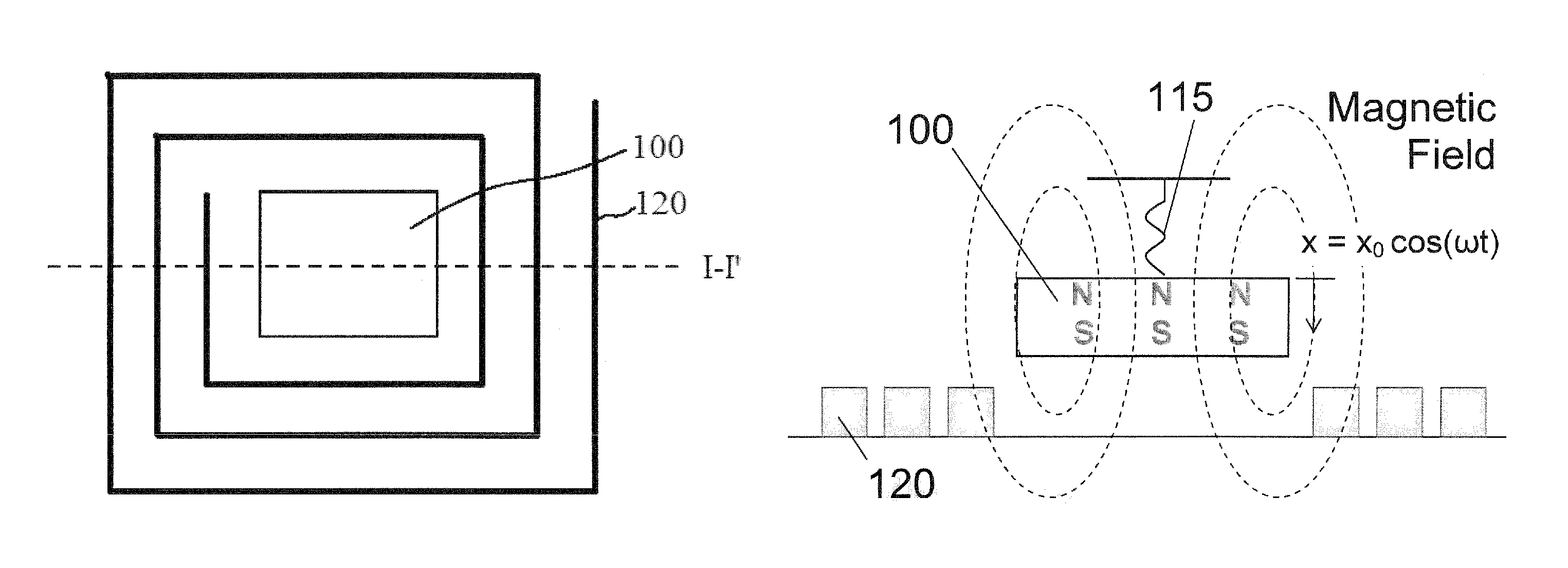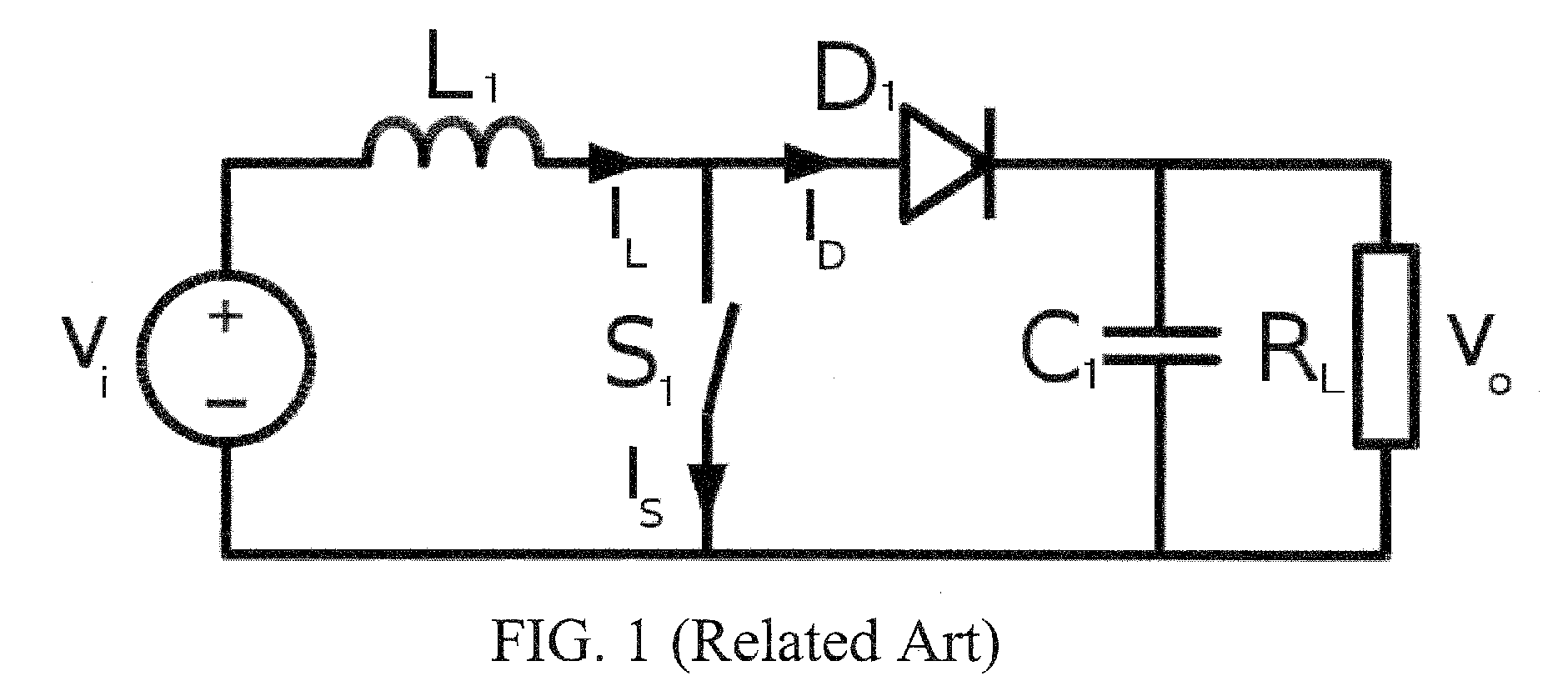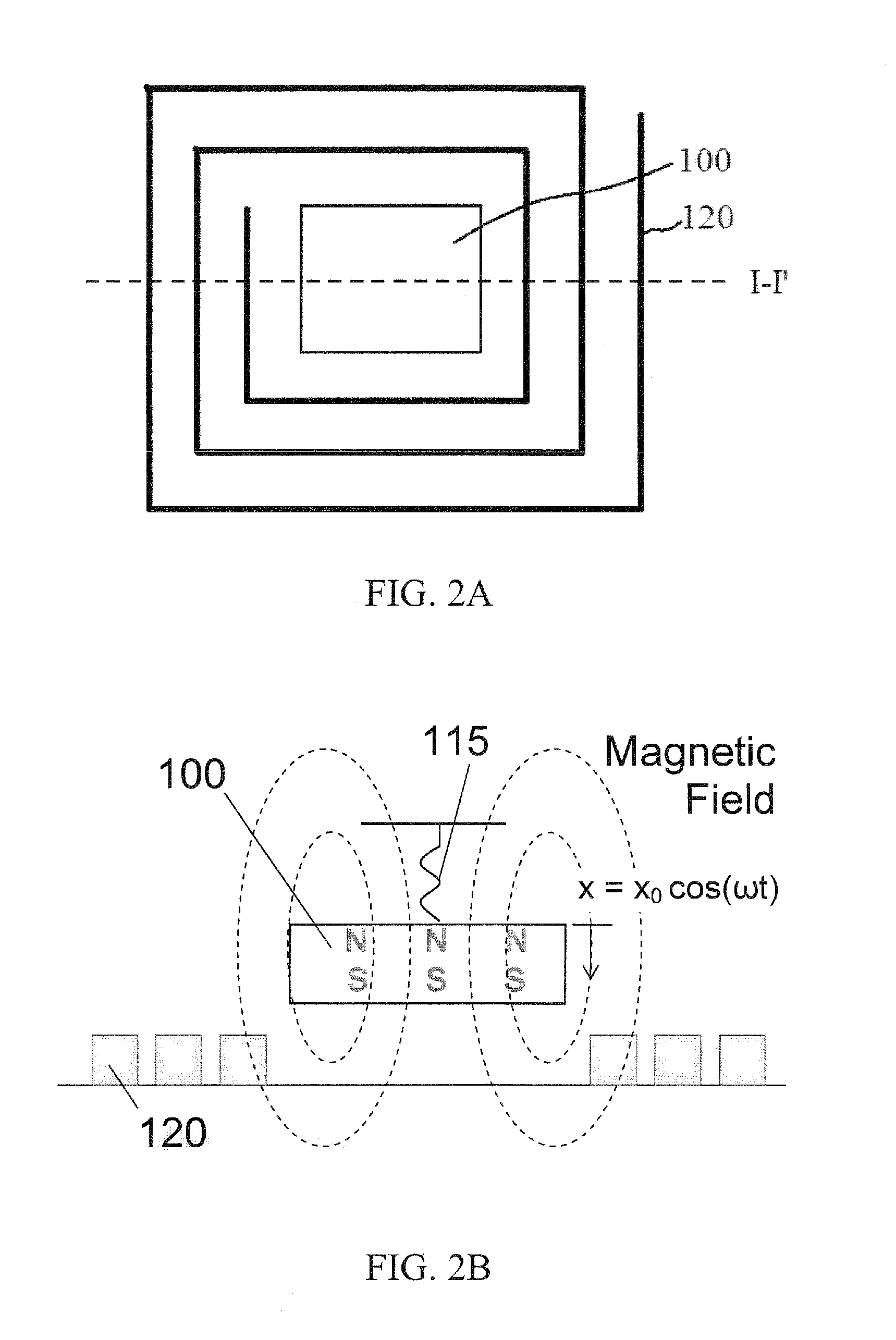Electromechanical inductors and transformers
a technology of inductors and transformers, applied in the direction of electric variable regulation, process and machine control, instruments, etc., can solve the problems of limiting the size and performance limiting both mission duration and useful payload, and the bulkiest and most inefficient components of a power system. , to achieve the effect of high q, high energy density and high density inductive energy storag
- Summary
- Abstract
- Description
- Claims
- Application Information
AI Technical Summary
Benefits of technology
Problems solved by technology
Method used
Image
Examples
embodiment 1
[0069]2. The resonating inductor of embodiment 1, wherein the magnetic material is one or more permanent magnets.
[0070]3. The resonating inductor of embodiment wherein the magnetic material is one or more soft magnets.
[0071]4. The resonating inductor of embodiment 1, wherein the conductor is in the shape of a coil.
[0072]5. The resonating inductor of embodiment 1, wherein the conductor is in the shape of a straight or curved wire.
[0073]6. The resonating inductor of embodiment 1, further comprising flexures attached to the conductor and magnetic material to enable translational or rotational motion between the magnetic material and the conductor.
[0074]7. The resonating inductor of embodiment 1, wherein the resonating inductor is fabricated as a microelectromechanical inductor.
embodiment 7
[0075]8. The MEMI of embodiment 7, wherein the conductor is a spiral coil and wherein the magnetic material is centrally disposed in the spiral coil.
[0076]9. The MEMI of embodiment 7, wherein the magnetic material is disposed on a compliant layer on a substrate, and configured to allow movement of the magnet.
[0077]10. The MEMI of embodiment 7, wherein the magnetic material is fixed on the substrate and the conductor is configured to allow movement of the conductor. The MEMI can further include additional magnets fixed on the substrate to affect flux in the coil.
[0078]11. The MEMI of embodiment 7, further comprising flexures or a cantilever attached to the conductor or magnetic material to enable translational or rotational motion between the magnetic material and the conductor.
[0079]12. A switch-mode power converter, comprising:
[0080]a resonating inductor in series between an input voltage signal and a switch.
[0081]13. A resonating transformer, comprising:
[0082]the resonating induct...
PUM
| Property | Measurement | Unit |
|---|---|---|
| frequencies | aaaaa | aaaaa |
| inductance | aaaaa | aaaaa |
| frequency inductance | aaaaa | aaaaa |
Abstract
Description
Claims
Application Information
 Login to View More
Login to View More - R&D
- Intellectual Property
- Life Sciences
- Materials
- Tech Scout
- Unparalleled Data Quality
- Higher Quality Content
- 60% Fewer Hallucinations
Browse by: Latest US Patents, China's latest patents, Technical Efficacy Thesaurus, Application Domain, Technology Topic, Popular Technical Reports.
© 2025 PatSnap. All rights reserved.Legal|Privacy policy|Modern Slavery Act Transparency Statement|Sitemap|About US| Contact US: help@patsnap.com



